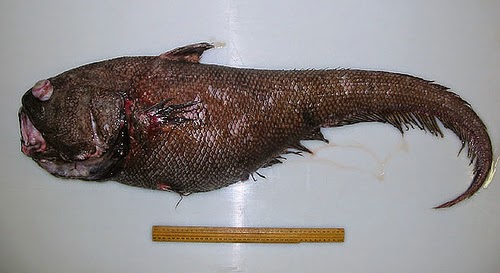This fascinating bird, the kakapo, holds several records such as being the world's only flightless parrot as well as being the heaviest parrot in the world, and is also unusual in being nocturnal.

The Kakapo (Māori: kākāpō, meaning night parrot), Strigops habroptila (Gray, 1845), also called owl parrot, is a species of flightless nocturnal parrot endemic to New Zealand. It has finely blotched yellow-green plumage, a distinct facial disc of sensory, vibrissa-like feathers, a large grey beak, short legs, large feet, and wings and a tail of relatively short length. A certain combination of traits makes it unique among its kind—it is the world's only flightless parrot, the heaviest parrot, nocturnal, herbivorous, visibly sexually dimorphic in body size, has a low basal metabolic rate, no male parental care, and is the only parrot to have a polygynous lek breeding system. It is also possibly one of the world's longest-living birds. Its anatomy typifies the tendency of bird evolution on oceanic islands with few predators and abundant food: accretion of thermodynamic efficiency at the expense of flight abilities, reduced wing muscles, a diminished keel on the sternum, and a generally robust physique.
 |
Map of historic Kakapo distribution. Based loosely on an image
(http://en.wikipedia.org/wiki/Image:Kakapohist.png) by James Dignan.
A derivative work of a multi-licensed image
(Image:NZ Locator Blank.svg) by Ozhiker. |
Kakapo are critically endangered; as of April 2009, only 125 living individuals are known,most of which have been given names.The common ancestor of the Kakapo and the genus Nestor became isolated from the remaining parrot species when New Zealand broke off from Gondwana, around 82 million years ago. Around 70 million years ago, the kakapo diverged from the genus Nestor. In the absence of mammalian predators, it lost the ability to fly. Because of Polynesian and European colonisation and the introduction of predators such as cats, rats, and stoats, most of the Kakapo were wiped out. Conservation efforts began in the 1890s, but they were not very successful until the implementation of the Kakapo Recovery Plan in the 1980s. As of January 2009, surviving Kakapo are kept on two predator-free islands, Codfish (Whenua Hou) and Anchor islands, where they are closely monitored. Two large Fiordland islands, Resolution and Secretary, have been the subject of large-scale ecological restoration activities to prepare self-sustaining ecosystems with suitable habitat for the Kakapo.















































